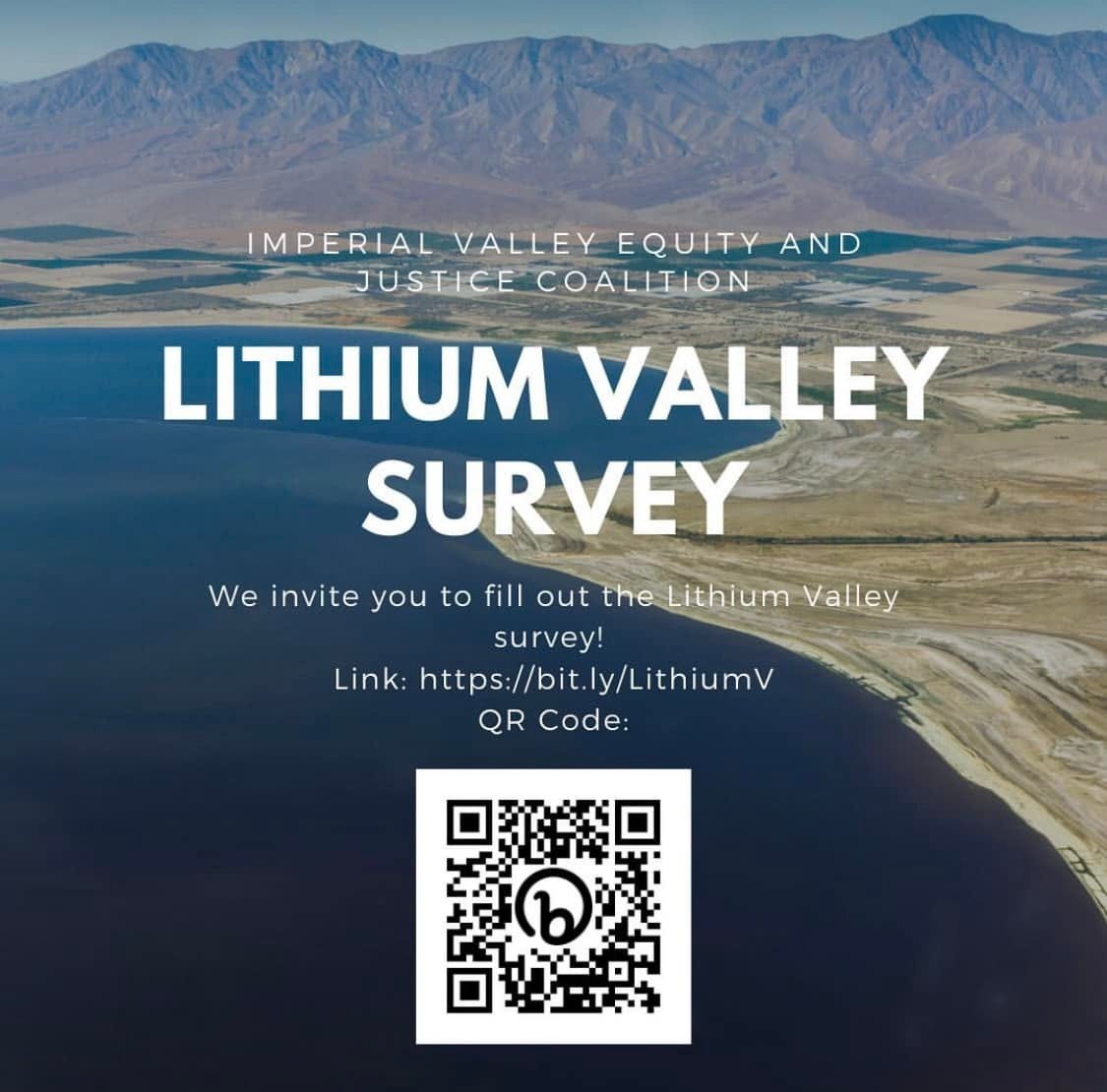Issue 17: Lithium Valley outsiders weigh in on California lithium tax
California’s recent lithium tax legislation is giving outsiders reason to doubt the long-promised golden era for the Imperial Valley.

Fresh this Week
‘An Excuse for Bailing’
Few critics of the so-called Lithium Valley stand out as much as Joe Lowry, a lithium market expert, who last week offered his sharpest take on California’s tax on lithium:
“The Salton Sea was never going to meet expectations - green or volume wise even if there is ultimately some production. ‘Taxafornia’ is giving nascent projects an excuse for bailing.”
Lowry has long been a skeptic of the promises that some lithium extraction companies in the Imperial Valley have made regarding their output. But now that the state has formally imposed a formula on how to tax lithium production, he hardly stands alone.
One analyst — albeit nameless — published a hot take on what the California lithium tax means for similar projects outside of California. The piece, published on Seeking Alpha, essentially makes these points:
Lithium Americas, which has a pending project in Thacker Pass in Nevada, appears a safer bet for investors given that the state is “known as a historically pro-mining jurisdiction.”
There have been some proposals to raise taxes on mining in the state, but the author says none have reached the ballot.
A recent University of Nevada, Las Vegas, study found that the state is perfect for the industry “as it encompasses every facet of the battery’s lifecycle (something no other state can yet boast).”
Want to join the discussion on developments of the Lithium Valley? Join the Facebook Group and subscribe to this newsletter for a fresh batch of news every Friday.
Imperial Valley SDSU Campus a Boondoggle in the Making?
Peter Herman, an English literature professor at San Diego State University, has joined the chorus of Lithium Valley skeptics.
In an opinion column published in the Times of San Diego, Herman argues that the $80 million STEM campus proposed in Brawley may not make much financial sense for the university as a whole.
Herman says that the $80 million campus investment from the state coincides with a $100 million cut from the California State University system’s budget.
The funding cut, Herman argues, represents a step back from the CSU’s negotiations with the faculty union that was expecting a salary raise for instructors.
He argues that the Brawley STEM campus would not be an “expansion” because SDSU currently does not offer any degrees in physics, biology, chemistry, engineering, computer science, mining or metallurgy.
As of fall 2021, he writes, SDSU’s Imperial Valley campuses served 951 students of which only 13 were for mathematics undergraduate students.
“Doubtless, showering money on the Imperial Valley campus makes for good politics. But does it make financial or educational sense?”
Statevolt CEO Stretches His Arms
Statevolt, the lithium-ion battery manufacturing company that announced in May to build such factory in the Imperial Valley, may be stretching its arms to do business beyond Controlled Thermal Resources.
Back in May, the company said it had made an agreement to use lithium extracted near the Salton Sea by the Australian-based company, CTR, to make batteries. CTR has not yet extracted any significant amount of the mineral to sell on the market, and Statevolt is still far away from fulfilling its ambitions.
In an interview with S&P Global, Statevolt CEO Lars Carlstrom said he is “keeping an eye on the abundance of potential lithium production assets being developed in North America.”
Though he did not address the potential impact that California’s lithium tax will have on his envisioned battery manufacturing facility, Carlstrom said “there are many opportunities also in Mexico” to source minerals for batteries. “I think the supply is less concerning for us,” he said.
Carlstrom also said that Statevolt is in talks with other companies beyond CTR to complete the whole source-to-product process in the Imperial Valley.
"We are taking this opportunity to explore this area either with partners or looking to collocate with the operators in this space. We are in talks with at least two partners currently for this process, so we don't need to send lithium to China or elsewhere," Carlstrom said.
Survey Seeks Imperial Valley Input on Lithium
The Imperial Valley Equity and Justice Coalition is seeking input from Imperial Valley residents on their thoughts on lithium and its new tax. Organizers say the survey will help inform how the tax revenue will be used.
“We plan to present these findings to the state and local governments to show community engagement on the topic and understand what the community wants from the revenue provided by this project.”
A Coachella Valley Inventor Emerges
KESQ-TV in Coachella recently highlighted a young man and his invention to extract lithium from the Salton Sea using photons to energize orbiting electrons.
Clay Jones, a Palm Desert High School graduate and former intern of Rep. Raul Ruiz, said he built the process out of his parents’ garage and presented it to the Salton Sea Authority.
In a tweet celebrating the invention, Ruiz encouraged others to follow in Jones’ footsteps.
“To all our communities' bright young minds like Clay, follow your passion for STEM; I believe you have the answer our country needs.”
Watch the KESQ-TV report on YouTube:
Want to join the discussion on developments of the Lithium Valley? Join the Facebook Group and subscribe to this newsletter for a fresh batch of news every Friday.





